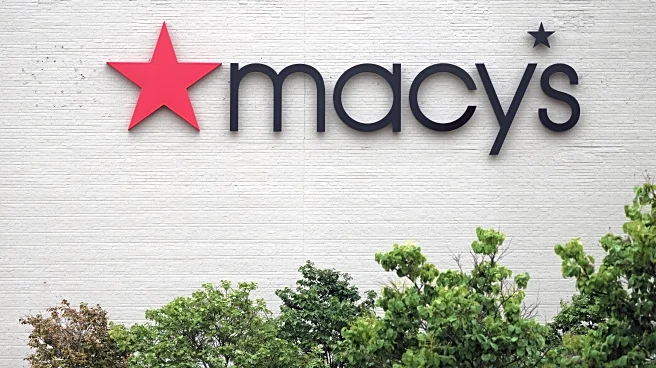What's Happening?
Several fashion companies are navigating the challenges posed by tariffs and shifting their focus towards direct-to-consumer (DTC) channels. Lafayette 148, L'Agence, Ramy Brook, Cinq à Sept, and LoveShackFancy are among the brands adapting their strategies to cope with the evolving trade environment. Lafayette 148 is expanding its DTC presence with new store openings and investing in technology to enhance customer experience. L'Agence is leveraging a multichannel approach, balancing wholesale and DTC growth, while Ramy Brook is expanding its event dressing and casual bottoms categories. Cinq à Sept is focusing on international growth and expanding its denim offerings, and LoveShackFancy is opening new stores and launching new product categories. These companies are also dealing with the uncertainty of tariffs, which continue to impact their sourcing strategies and pricing.
Why It's Important?
The shift towards direct-to-consumer channels reflects a broader trend in the fashion industry, where brands seek to establish closer relationships with consumers and control their pricing strategies. This transition is crucial for maintaining profitability amid tariff challenges and supply chain pressures. By diversifying their sales channels, these companies can mitigate risks associated with wholesale dependency and enhance brand loyalty. The focus on international expansion and new product categories also highlights the industry's efforts to tap into new markets and consumer segments. As tariffs continue to evolve, fashion brands must remain agile and proactive in their sourcing and pricing strategies to sustain growth and competitiveness.
What's Next?
Fashion companies are expected to continue expanding their DTC channels and exploring international markets to offset tariff impacts. Investments in technology and customer experience will be crucial for sustaining growth in the DTC segment. Brands may also seek to diversify their supply chains further to reduce dependency on tariff-affected regions. As the trade environment remains uncertain, companies will need to closely monitor tariff developments and adjust their strategies accordingly. Collaborations and new product launches will likely play a significant role in attracting consumers and driving sales.












